Try this weights at home workout to improve functional strength
Work your arms, chest, shoulders and more with this weights at home workout, which requires minimal equipment
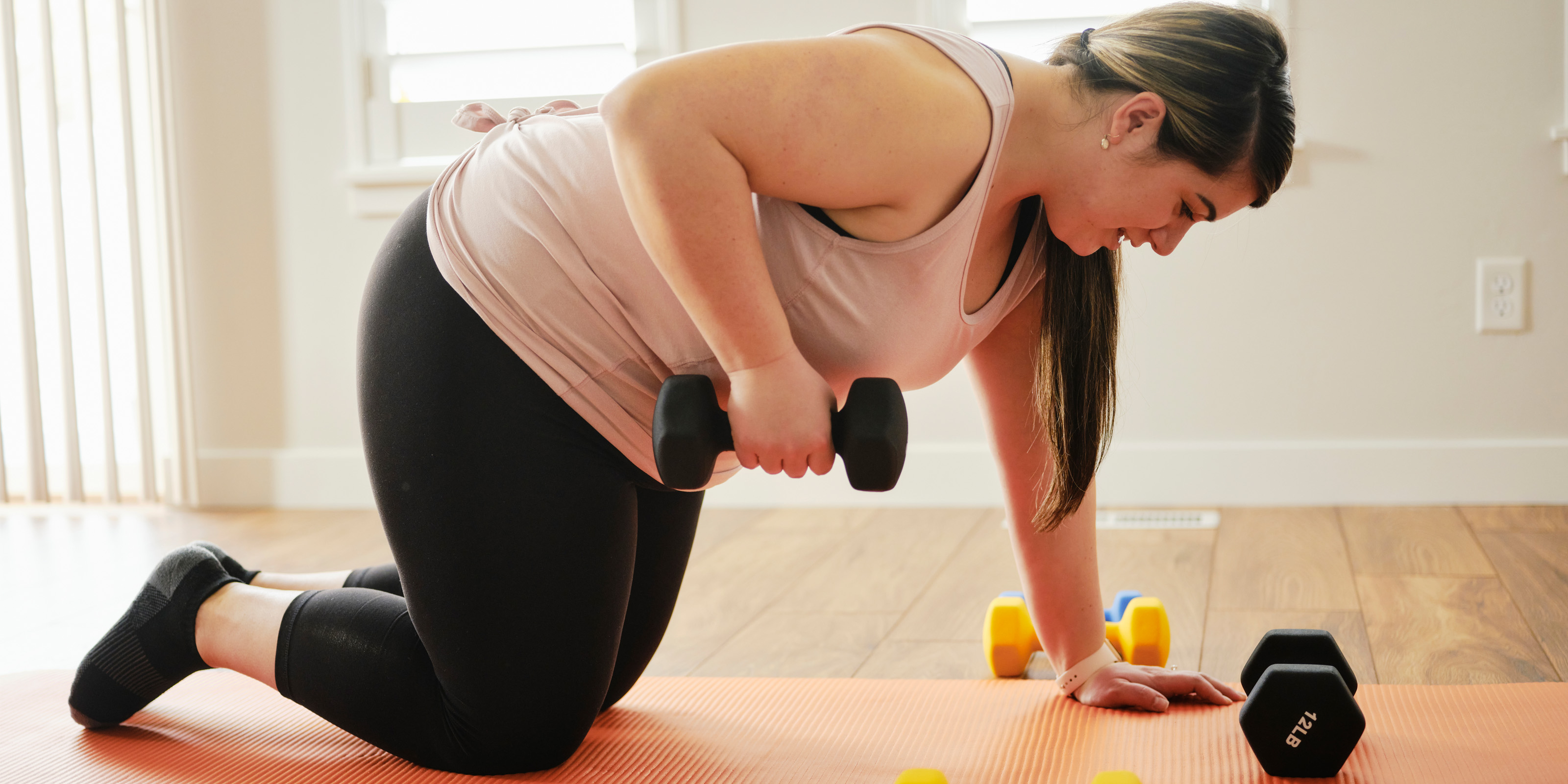
Knowing how to do a weights at home workout is useful if you’re struggling to make it to the gym. These simple routines allow you to train different sets of muscles with minimal equipment. All you really need is a set of the best adjustable dumbbells and you’ll be ready to work up a sweat in the comfort of your own home.
This simple, at-home routine is focused on improving functional strength. Using compound movements and push-pull supersets allows you to increase your muscle power in a time-efficient way.
Warm up before you start this weights at home workout and read through the description of the exercises carefully before jumping into this home-workout routine. New to weights? Learn weightlifting for beginners.
What you’ll need

First, you will need a set of weights. These can be adjustable dumbbells, kettlebells or even sandbags. If you only need light weights you can substitute tins of food, which weigh just under a pound (400g).
It is also helpful to have a workout mat (you can use a yoga mat if you have one to hand) and a workout bench, though these aren’t essential.
Warm up
Starting your workout slowly reduces the risk of injury. Go for a brisk walk or cycle for 10 minutes, jog on the spot at home or around the block, or do simple exercises like jumping jacks and press ups. You want to wake your body up and activate your muscles without overdoing it.
Avoid doing any kind of static stretching immediately before you jump into a workout. Studies, including a 2014 review published in Current Sports Medicine Reports, have found that static stretching (where you hold stretches for extended periods) reduces exercise efficiency, so save any long stretches or foam rolling for after your exercise.
Get the world’s most fascinating discoveries delivered straight to your inbox.
Sets and supersets
Perform each exercise for a total of eight to 12 repetitions. You should just be able to complete the last rep of a set without losing form. If you can’t manage eight repetitions go for a slightly lighter weight. If you can complete more than 12 repetitions, pick a slightly heavier weight. Keep a note of what weight you use so that you can increase this over time as you get stronger.
You will perform four out of the five exercises below in push-pull supersets. These are pairs of exercises where you work a push-movement exercise, followed by a pull-movement exercise, or vice versa, without a significant rest in between. Working opposite groups of muscles reduces the likelihood of you developing a muscle imbalance, which can happen when opposing sets of muscles aren’t growing equally (which can eventually make injury more likely). Training this way is also faster than single-set exercises, allowing you to get your workout finished quickly and efficiently.
After you have worked the first set of the pair of exercises, rest for no more than 60 seconds to catch your breath, then complete the second set of the pair. After you’ve completed the second set of the pair, rest for three minutes. Three minutes will seem like a long time but this provides the optimum amount of rest to allow you to push yourself during subsequent supersets. Continue repeating the process until you have completed three pairs of supersets, before moving on to the next pair of supersets, and then the final set.
For each exercise ensure you lightly engage your core. If you can’t complete a rep without compromising your form then stop, and either choose a lighter weight or aim for fewer reps next time.
Super set 1a: Floor press or bench press
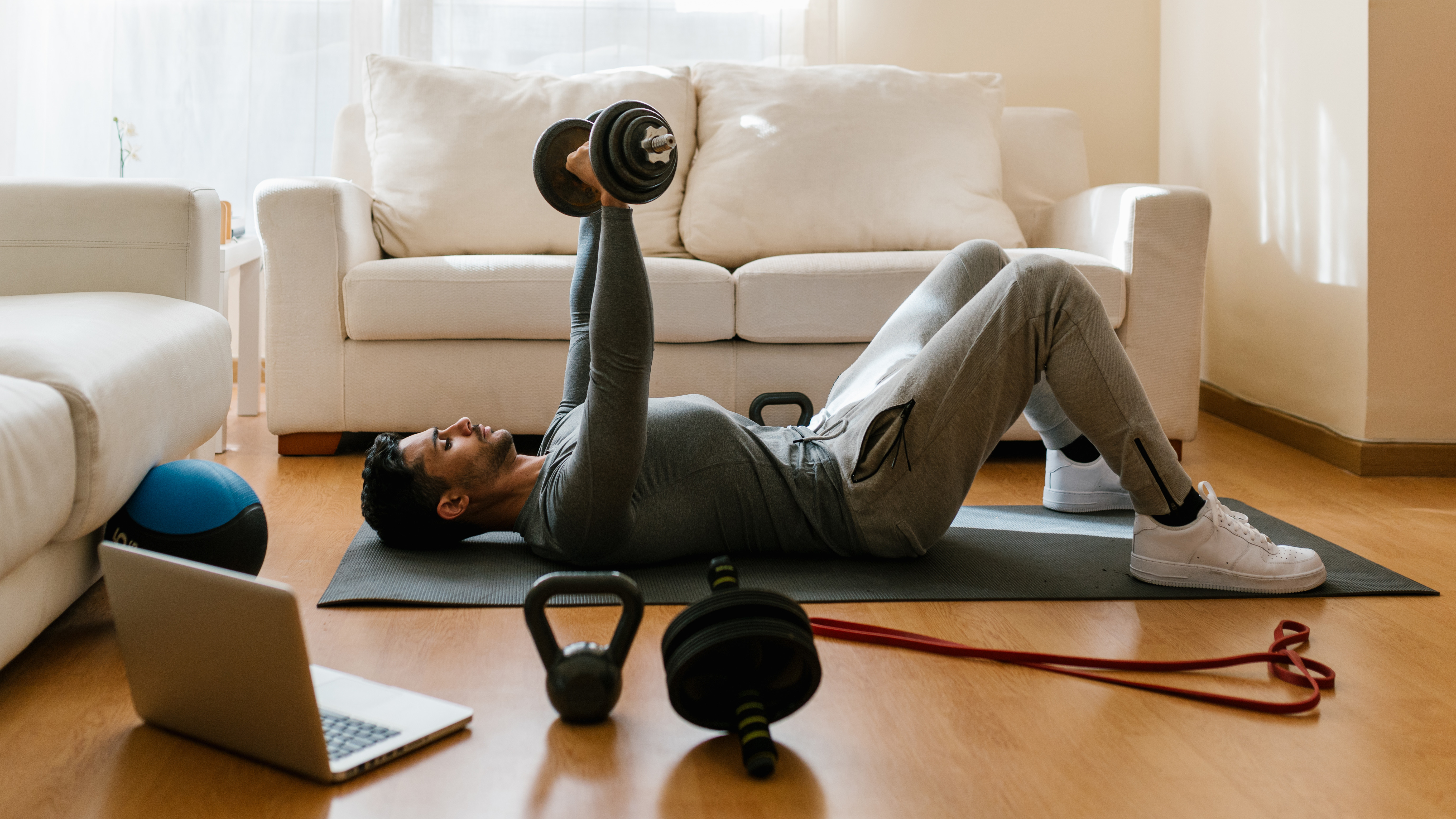
Works: Chest and arms
Method: Lie on your back either on the floor or on a bench, with a dumbbell in each hand. Rotate your hands so that the bar of the dumbbell is parallel to your shoulders and your hands are in line with your chest. Keeping this alignment throughout, push upwards until your arms are straight, allowing the dumbbells to meet in the middle in front of you. Return to the original position to complete the rep.
Super set 1b: Bent over row
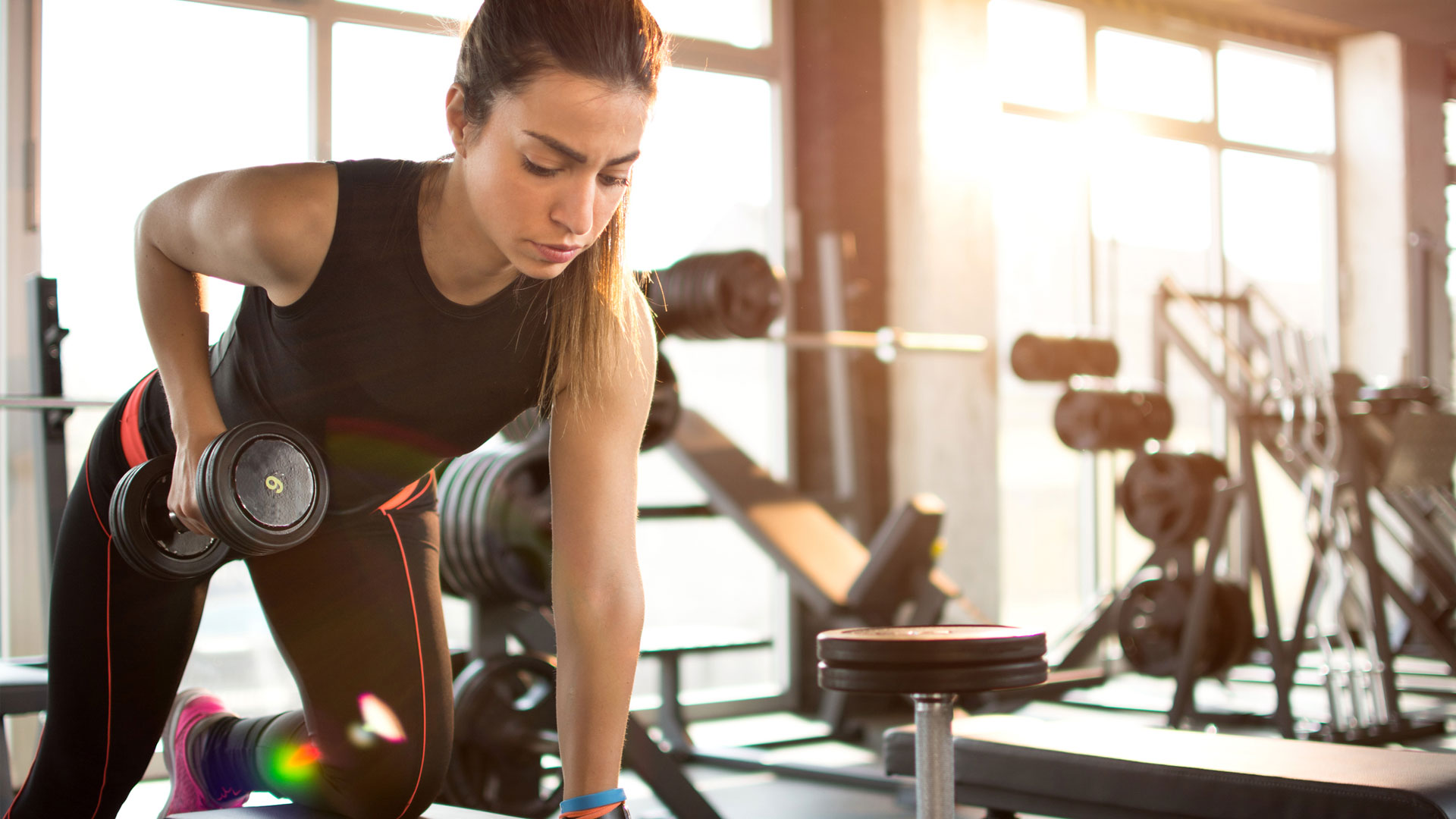
Works: Chest and arms
Method: Start with your left knee kneeling on a chair or bench, with your right leg straight and right foot on the floor. Brace with a straight left arm on the chair/bench, with your dumbbell in your right hand and a straight arm and the bar of the dumbbell parallel with your outer thigh. Ensure your back is straight and your core is engaged.
Bend your right arm, keeping it fairly tight to your body, so that the weight moves back and up until it’s by your chest. Return to the original position.
When you’ve completed the set for the right arm, repeat for the left side without a rest in between.
Super set 2a: Shoulder press
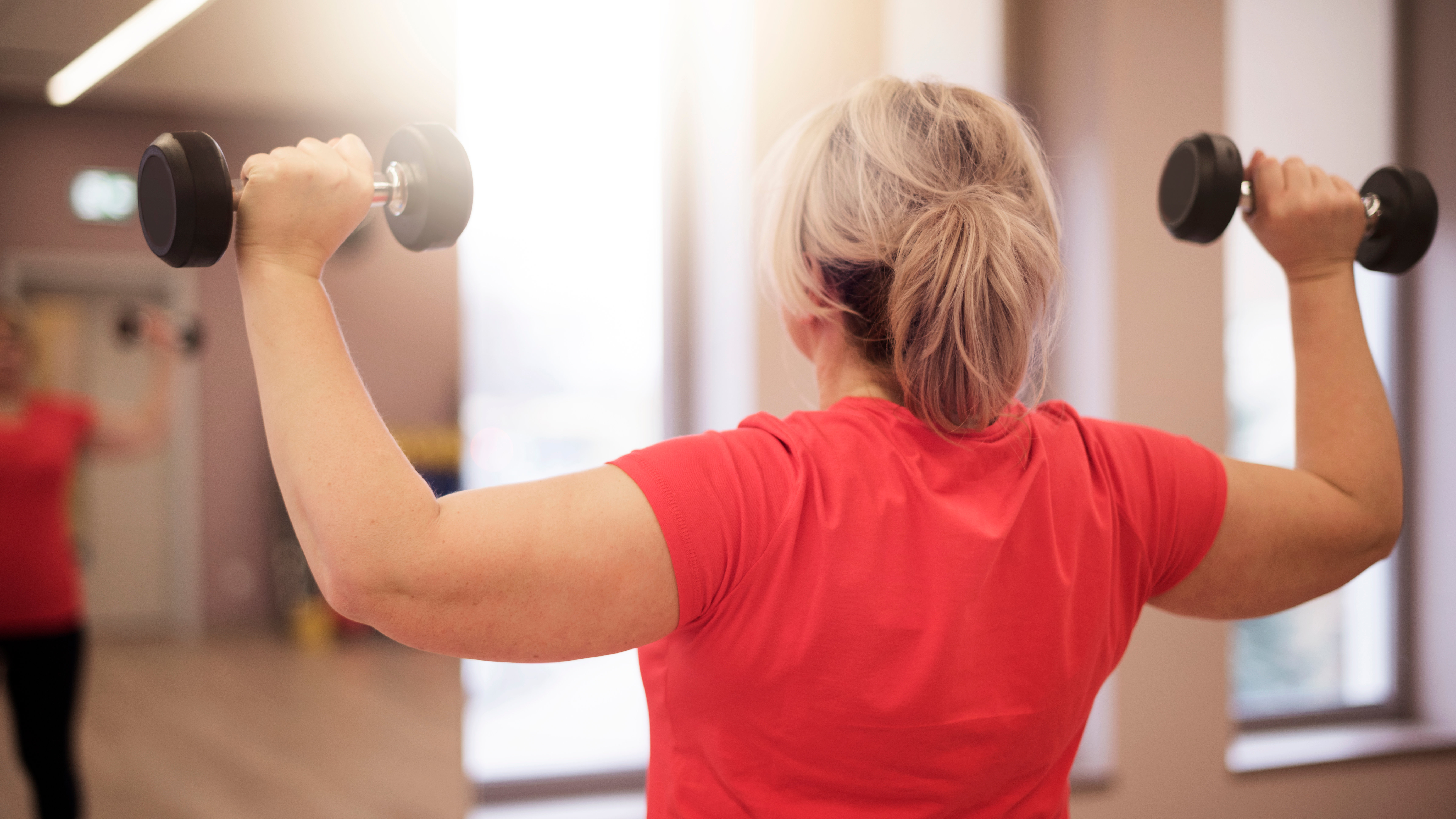
Works: Back, shoulders, arms
Method: Begin with dumbbells held at shoulder height with bent arms at 90 degrees and the bars of the dumbbells running parallel to your shoulders. Your elbows should be in line with your hips and your wrists should be facing forwards.
Push upwards, straightening your arms, without allowing your arms to flare out or in from the vertical line. The dumbbells will end up close together at the top of the move but you don’t need to touch them together. Return to the original position to complete the rep.
This exercise can be performed standing or sitting. Ensure your core and back are engaged throughout.
Super set 2b: Dumbbell deadlift
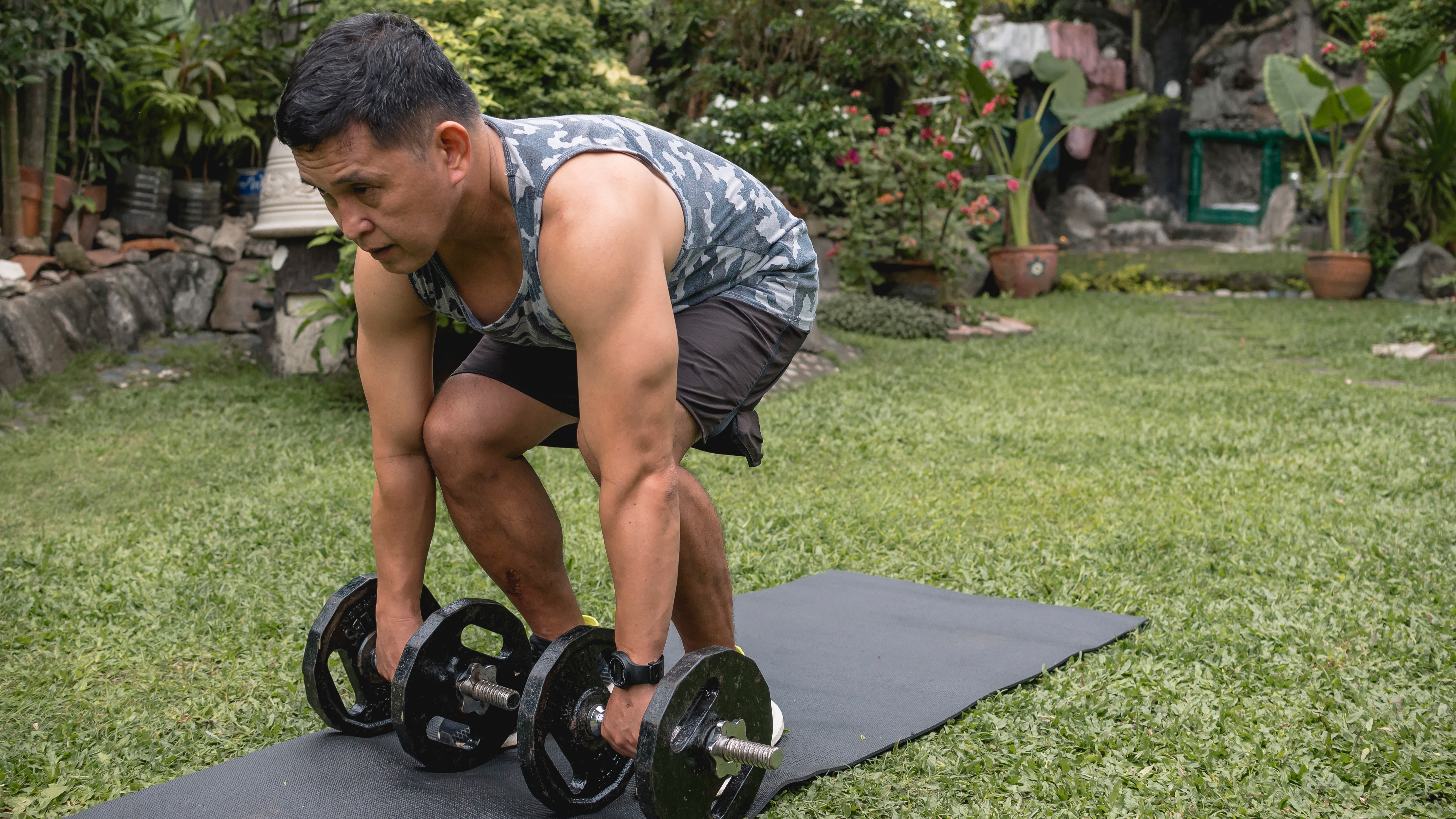
Works: Posterior chain, back, shoulders, arms
Method: Begin with dumbbells held with straight arms by your side. Your chest and chin should be slightly lifted, core engaged and your shoulder blades should be squeezed slightly back and together so that they are engaged too.
You will begin the deadlift hinging at your hips as you move, allowing your legs to move into a 90 degree angle. If you don’t have enough hip mobility you can hurt your back doing deadlifts, so if you’re not sure whether you do, try putting the dumbbells on a chair or stool before beginning, so that you can start in a comfortable position for the first rep, rather than having to pick them up off the floor.
Pick up the dumbbells with the bars parallel to your hips and stand up straight, keeping your chin slightly tucked and your shoulder blades down and back.
Lower the dumbbells again in front of you until they are about halfway down your shins. If you have poor hip mobility and can feel your back pulling at all then you will need to lower them less.
Repeat the above steps for one rep.
Final set: Weighted reverse lunges
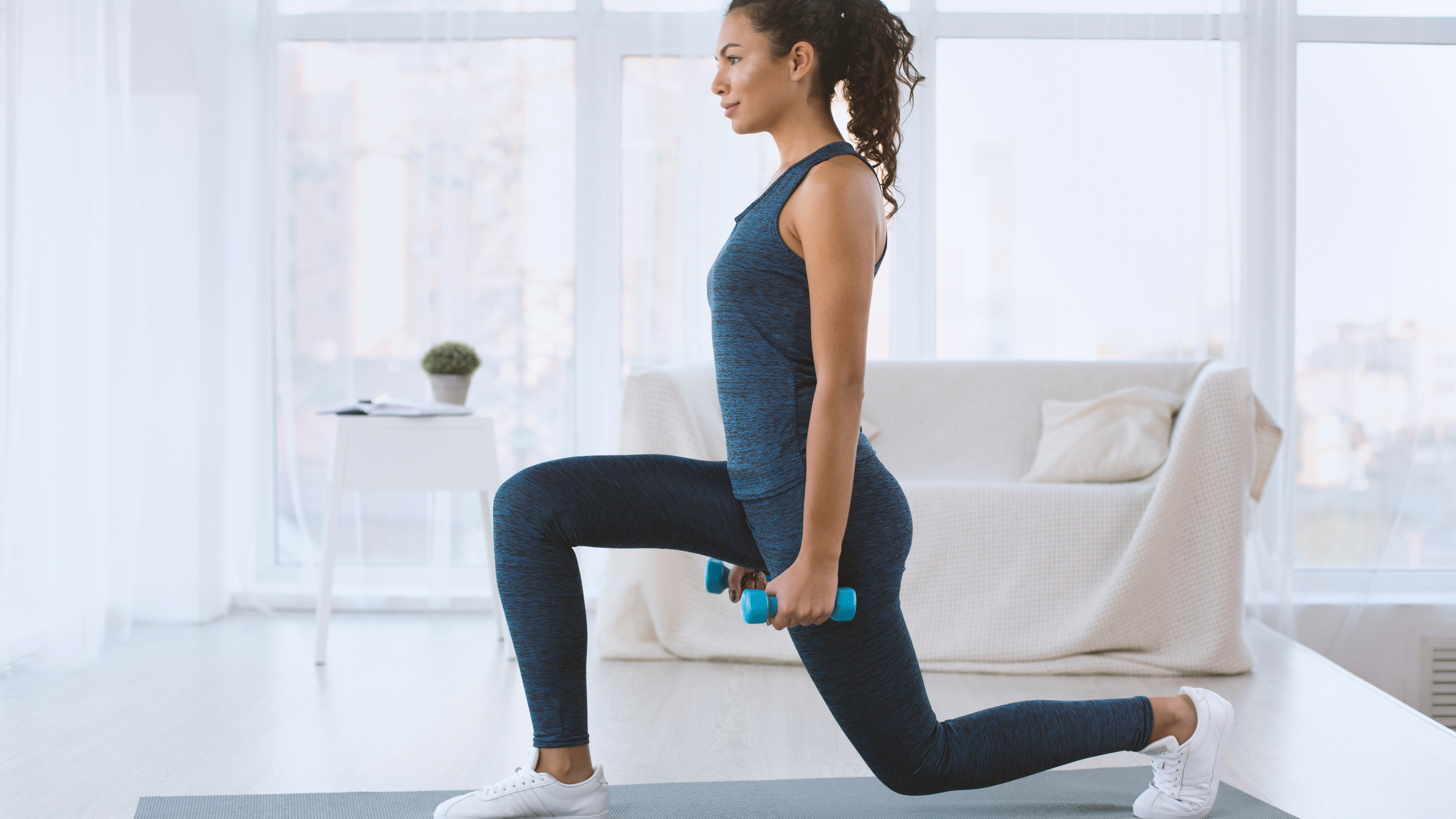
Works: Legs and core
Method: Stand with a dumbbell in each hand, arms by your side and both feet together. Take a step backwards deep enough that you need to bend your front (standing) leg to about 90 degrees, but no lower, making sure that your leg stays parallel to the other, rather than allowing your knee to track out or in.
Your back knee will also need to bend as you step back. Again, don’t let it bend beyond 90 degrees and keep your leg parallel to the other. Return to the standing position and repeat on the other side; that's one rep complete.
Cooldown

When you’ve completed your workout (three cycles of each pair of superset, plus three cycles of your final set) you can take time to perform static stretches, work over your body using a foam roller or simply go for a gentle walk.
Bibliography
The Effects of Stretching on Performance, Current Sports Medicine Reports (2014)
Rosee is a writer at Live Science. She reports on health, fitness, nutrition and well-being, with special interests in outdoor living, cycling, swimming and freediving. A journalist for more than 20 years, her work has appeared in Countryfile magazine, Mountain Biking UK, Live Science, Coach, Tom’s Guide and on BikeRadar.com, among others. Rosee is a marathon swimmer and freediver, who has worked on a project to raise awareness of marine ecology in Bermuda’s schools. She is an open water veteran of many years and is currently training to swim the English Channel. She holds a number of qualifications in swim coaching and freediving and particularly enjoys working one to one with adults to help them overcome their fear of the water.



